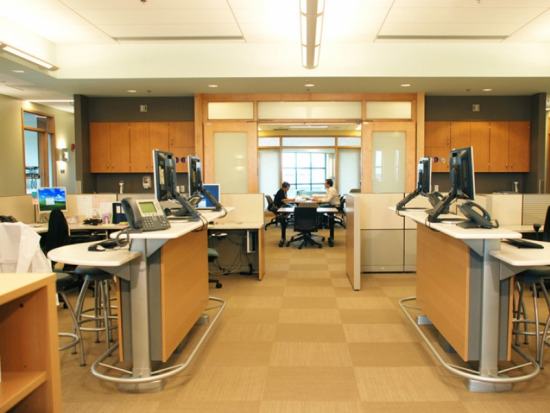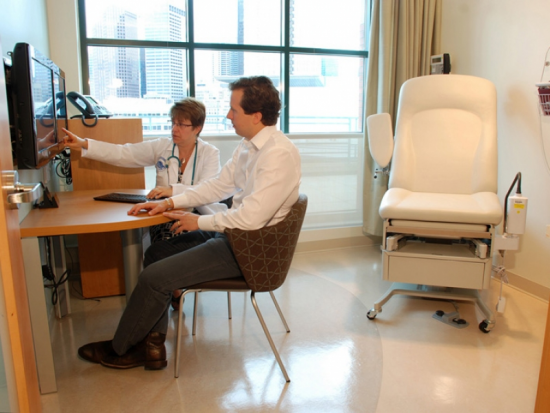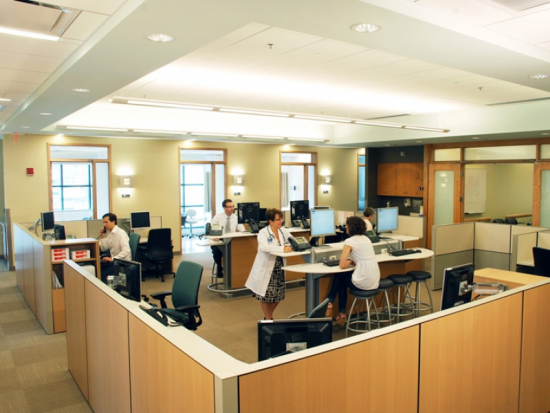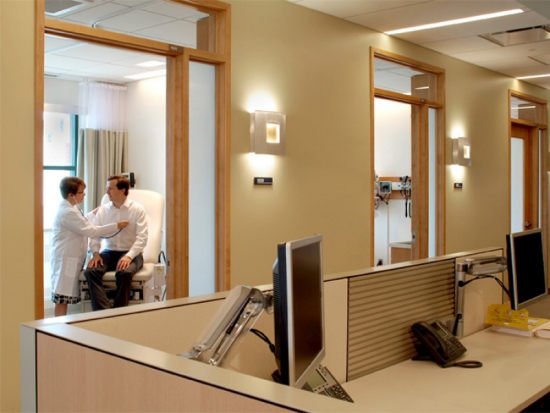Ambulatory Practice of the Future (APF)
About This Clinic
The Ambulatory Practice of the Future (APF) at Massachusetts General Hospital is an innovative new approach to primary care delivered by highly collaborative teams, with the patient as an active participant. This proactive partnership between patients and caregivers focuses on prevention and controlling the cost of care through prevention of chronic disease. The practice also seeks to improve the work life of primary caregivers and support their professional development.
The APF’s care model involves a complete paradigm shift in ambulatory care:
Current Paradigms APF Paradigms
Focus on sickness ---> Focus on health & life balance
Event-based healthcare ---> Continuous healthcare
Static experiences ---> Interative experiences
Directive communication ---> Collaboration
Individual experiences ---> Team-based experiences
Patient goes to treatment ---> Treatment goes to patient
One size fits all ---> Mass customization
Obscurity ---> Transparency
The Ambulatory Practice of the Future opened in May of 2010. Currently, the clinic is serving only MGH employees and their spouses or partners. This practice will gather data over its first three years of operation that will inform how the model will be applied to other MGH primary care practices.
Programming Process
Anshen+Allen, now a part of Stantec Architecture, worked with MGH and the APF project team in a highly collaborative series of workshops that included all stakeholders. Lean principles were applied to enhance operational efficiency, eliminate waste and optimize caregiver/patient interaction. The intense involvement of the APF team ensured that the design met its goals for promoting collaboration, experimentation, and continuous improvement. In addition to the Medical Director and Project Manager, the design team included staff and patient representatives.
Built Environment Features
The design encourages a proactive focus on health and life balance, dissolves the traditional barriers between doctor and patient, and provides open access to resources and education for both patients and caregivers. Some of the design features include:
- Comfortable spaces for health planning, record updating and personal reflection;
- Light filled exam rooms with a separate zone for caregivers and patient conferences;
- Teaching and learning spaces that flex in size to accommodate patients and staff learning;
- A robust and intuitive IT interface enables on-site or remote scheduling and check in. Virtual visits are possible from any exam room or private location;
- The care team work area occupies the center of the clinical core, supporting interaction among care teams;
- Shared “off stage” offices and staff interaction spaces offer places of respite and pro¬mote a collaborative culture of care;
- An innovation lab will pioneer and test new processes and products;
- Sustainable, non-toxic materials and finishes maintain a healthy care environment.
This new model of care will be studied for its impact on quality, cost and satisfaction for patients and providers. The lessons learned will be translated to the MGH primary care community and beyond, transforming the practice of primary care in the future.








